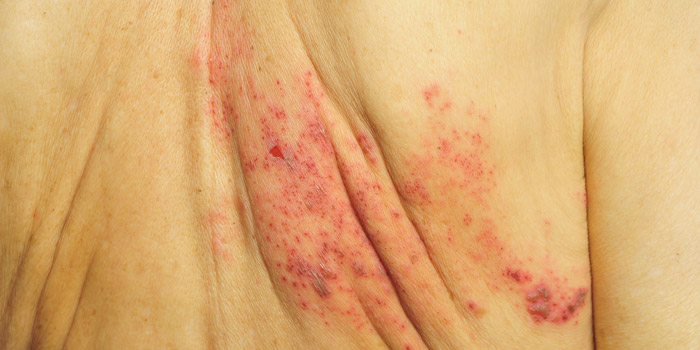If you are over 60 (or care for someone who is), it is highly probable that you (or they) had a case of chicken pox when you were young. The vaccine for chicken pox was released in 1995, meaning you were probably infected long before it was available. You are also under the impression that chicken pox is a “one-time thing” and cannot catch it again.
This is essentially true; however, in your later years, the varicella-zoster virus from your bout with chicken pox still lingers in your body. Later in life, an emotional or physical stress event coupled with a weakened immune system can trigger a reactivation of the virus in the nerve tissue and can wreak havoc in the form of Shingles. Even when the shingles rash has healed, repercussions may persist for months or years.
Symptoms of Shingles
Shingles’ initial symptoms are burning, tingling, numbness, and itching. The rash generally only impacts the head, face, or trunk of the body. Sooner or later, a blistery rash develops, much like the rash with chicken pox. While chicken pox is fairly widespread, shingles is more localized in one area of the body.
Typically, only the head, face, or trunk of the body is affected, with the first symptoms being burning, tingling, numbness, and itching. except it is localized to one area of the body and is band-like in distribution, following the nerve that serves that area of the body. While the rash is present, the pain and itching can be intense.
Vaccinations
Fortunately, in 2006, a shingles vaccine called Zostavax was released. Zostavax contained a much-weakened chicken pox virus, which stimulated your immune system to continue fighting the latent virus, keeping it inactive. It has since been replaced in the U.S. by Shingrix.
In 2017, Shingrix was introduced. Shingrix is so much more effective (90%) that Zostavax is no longer available. Shingix is administered in two doses split by six months. According to the CDC, the new vaccine greatly reduces the probability of getting shingles. The protection lasts for at least seven years. That being said, only about 30 percent of people over 60 have been vaccinated.
The most common side effects of Shingrix are redness, pain, swelling, and itching at the injection site, and headaches. You should talk to your doctor or pharmacist before getting Shingrix if you have any allergies, a weakened immune system, or a history of stem cell transplant.
Medicare Part D and Medicare Advantage Plans with built-in drug coverage (Part C) cover the shingles vaccine.
Who Should Get Vaccinated?
Experts suggest that anyone 60 and older should be vaccinated. It was previously believed that if you have had shingles, you cannot get it again. This has been disproven. Shingles can recur, so even if you have already had a bout of shingles, you can benefit from the vaccination.
You should not get the vaccine if you have a life-threatening allergic reaction to gelatin, the antibiotic neomycin, or any component of the vaccine. Don’t get the vaccine if your immune system is compromised by things like cancer treatments or steroids. If you have a mild cold, it is okay to get the vaccine, but if you have a severe illness, it is better to wait until you have completely recovered.



